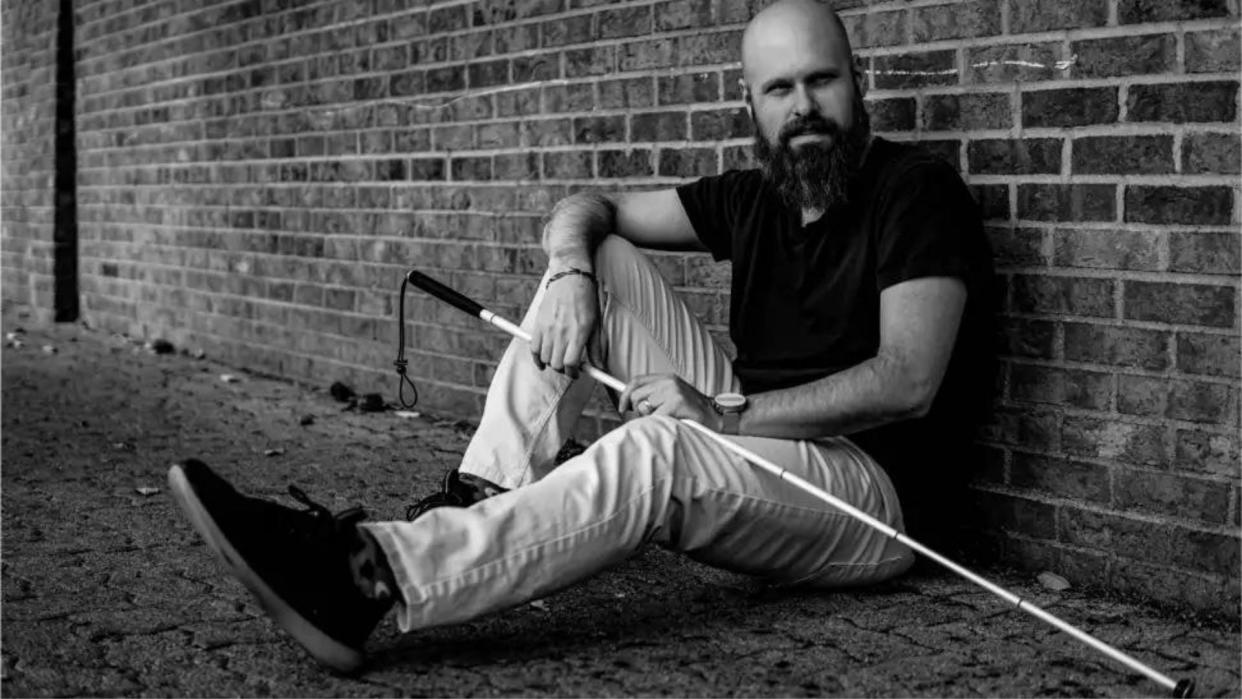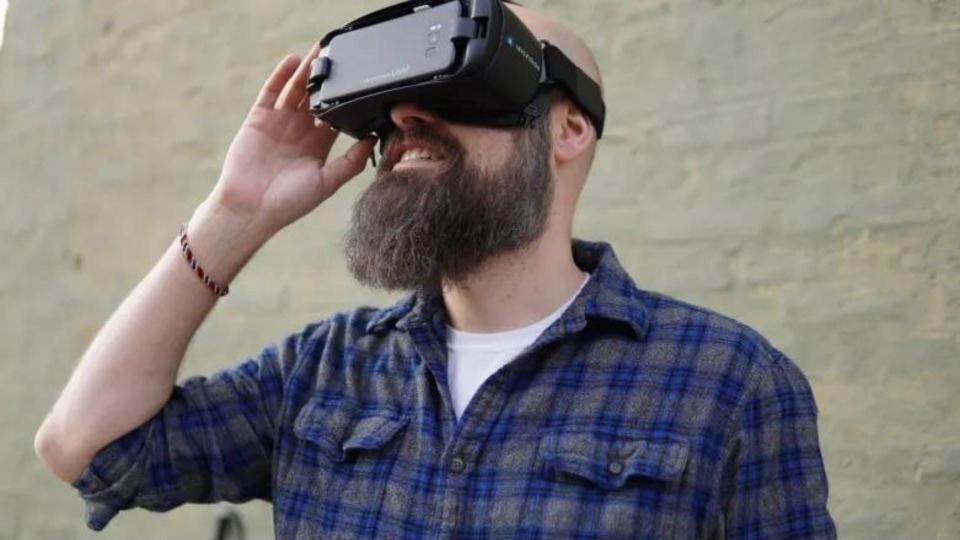‘The Blind Life’ host shares top accessible web products

— Recommendations are independently chosen by Reviewed’s editors. Purchases you make through our links may earn us a commission.
The World Wide Web exists as one of humankind’s greatest technological innovations. For all its faults, it pervades as the information superhighway, a limitless trove of collective information at our fingertips that has become a necessity in our daily lives. To be cut off from such an essential tool for just a few hours would be torturous for most to endure, but that reality remains a lingering occurrence for persons with disabilities.
There’s a lot more where this came from. Sign up for our weekly newsletter to get all our reviews, expert advice, deals and more.
Global Accessibility Awareness Day (GAAD) is an annual celebration designed to honor those product designers and web developers with the courage to think differently. Taking place on the third Thursday in May, GAAD aims to reward modern web accessibility while reflecting on the advancements still left to accomplish.
Sam Seavey, perhaps best known for his successful YouTube channel, The Blind Life, shared a cautiously optimistic view of the occasion speaking to Reviewed via video chat. “I imagine it has to help in some way,” he says. “I’m more of a cynic, I guess you could say. I think it comes from years and years of reviewing products, where I don't just take anything at face value. I look at the pros and the cons. I think about the goods and the bads, and I weigh them equally. So because of that, I see things like this, as it has to be helpful and bring awareness to the cause, but then the cynic in me thinks, is it just some corporation or company checking a box?”
Seavey is legally blind following a diagnosis of Stargardt’s Disease, a form of macular degeneration, in 1985. The condition essentially eliminates one’s central vision, leaving just the peripheral to see. Since he started bringing awareness to accessible products on YouTube in 2013, his channel has amassed more than 6 million views from more than 44,000 subscribers.
A fractured web

Like many in the blind-and-low-vision community, Seavey experiences the web via mobile or computer using a combination of magnification software and screen readers, which he describes as “hit or miss.” Both positive and negative sides of the situation came to bear shortly before our chat, when Seavey was trying to renew his ID via a state-run website.
“I turned on [Android] TalkBack real quick, so it would read out the website for me. Everything up to that point I could do just with magnification. I didn't need my screen reader. But at that point I did so I turned it on, and it wouldn't read anything,” Seavey describes, “it wouldn't read anything on the page.”
And when those moments happen, the feeling for Seavey and those impacted can be devastating. “It's like, all this stuff is there for me to try and explore, but I can't access it because I can't read the stupid menu right here. It may sound dramatic, but it's soul crushing. To know all of this is out there, but I can't access it because of this one stupid little thing,” Seavey says, recalling moments when he felt his disability left him out of important activities.
Seavey was quick to point out that, as a product reviewer, he has the privilege of switching between Apple and Android devices when the other fails, but others in this scenario wouldn’t be as lucky. In that particular case, a blind Android user would be restricted from a required service in that particular state.
As a user who relies primarily on 300% scaling and magnification over screen readers for navigation, Seavey admits there are frequent faults in that technology too. “I would have to lower the scaling in the browser to like 60% to compensate for the scaling on my computer to see how a website is supposed to look for someone that's just viewing it normally. But the problem is, I don't view websites that way, I view them scaled up. And so developers don't take that into consideration. I have to lower the scaling on the on the Chrome browser all the time. It's really frustrating,” he says.
These shortcomings mean standard web windows often don’t display correctly because of Seavey’s unique needs, despite those modifications being necessary for his best personal experience. Most often he notices these flaws when companies leverage standardized accessibility plugins for their websites, designed to add basic accessibility features, like enlarged text and color inversion, quickly and with little effort. “I think some companies just slap on that surface level and say it's done,” Seavey presumes, but more tailored accessibility solutions almost always yield better results.
The products that help

For all the times when digital accessibility has failed Seavey and others in the blind-and-low-vision communities, there are innovative products capable of filling those gaps. Every person’s situation is unique, but here are some of the products Seavey uses most to make the web more accessible to him.
Custom-built PC with top-tier hardware
40-inch, 4K Samsung TV as a monitor to “offer my eyes the best opportunity they can to see the image.”
The Windows Magnifier app built into Windows 11
Dragon Home Naturally speaking software for times when it’s easier to dictate by voice than read a keyboard.
While not directly associated with web access, Seavey isalso quick to point out the immense progress made in digital readers as well, that help him see the real world through digital magnification not too dissimilar from the software he uses.
First on his list is SightCare’s CloverBook Pro, a product with a 12.5-inch, 1080p screen capable of up to 60x magnification and full text-to-speech support. Just place a document or book under the lens, and you’ll be able to either see the product up close or have its contents read back to you via OCR. “It folds down, it's portable, it just ticks all the boxes,” Seavey says. “It has everything you would need. I think it's fantastic for students or business professionals.”
For those who desire more natural viewing instead of fiddling with and lining up source material with a portable magnifier lens, Seavey is also partial to the growing number of accessible wearables meant to help the visually impaired community. His favorite is the premium-priced IrisVision Live. It’s an FDA-approved visual aid that combines Samsung Gear VR technology with bespoke software developed by vision experts at Johns Hopkins University.
“It's essentially like electronic binoculars, but you can also use it for up-close viewing for like reading, things like that,” Seavey describes. “The first time I put that on, I was just blown away by how much I could see. I could finally zoom in and see my family's faces! I could see my kid's face for the first time, the detail in her face, without having to get uncomfortably close.” These days, Seavey also uses the IrisVision for sight-seeing, during important dinner table conversations, and to watch his daughter’s school performances.
And Seavey’s experience isn’t an isolated one. “I've also demonstrated that at my job when I work with clients,” the YouTuber says. “I've demonstrated those wearable devices so many times, and I've had so many people cry when they try that out and suddenly they can see for the first time in years. It's truly been very moving.” Both on the web and in the real world, digital innovation continues to pay dividends for the low-vision community especially.
Get deals and shopping advice delivered straight to your phone. Sign up for text message alerts from the experts at Reviewed.
The product experts at Reviewed have all your shopping needs covered. Follow Reviewed on Facebook, Twitter, Instagram, TikTok or Flipboard for the latest deals, product reviews and more.
Prices were accurate at the time this article was published but may change over time.
This article originally appeared on Reviewed: Best and worst web accessibility products, per the The Blind Life's Sam Seavey

